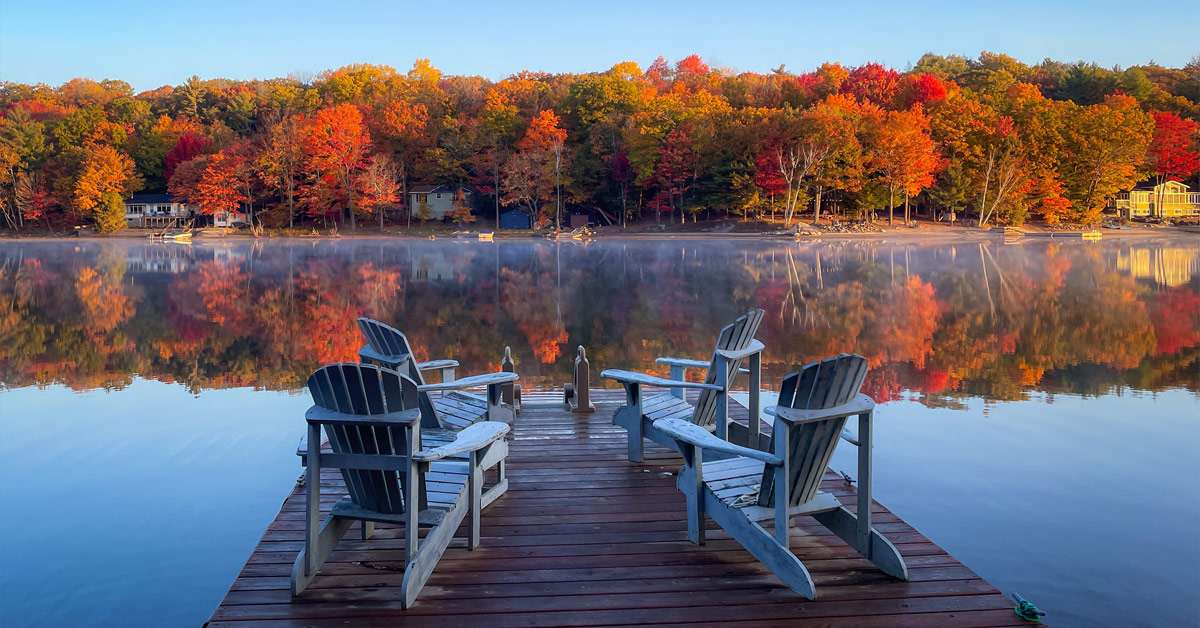
If you’re leery of going into another winter in cottage country, you’re not alone. Many areas were severely impacted by a series of unprecedented weather events last fall/winter/spring.
It was enough to have some long-time cottage owners thinking of selling.
It started with a major early snowstorm that closed Hwy 11 last November, sending most snowplow operators to help with clearing and stranded traffic. That left many cottagers without their snowplowing. To top it off, the accompanying snow squalls knocked out Hydro for a long time.
Spring brought the ice storm that downed numerous trees and knocked out power for a long time again. High water levels from snow melts and heavy rainfalls created flooding, which may have affected foot valves, submerged pumps, and sump pumps.
Adding to the difficulties was extensive wildfire smoke that made spending time cleaning up and making repairs outside dangerous.
While preventing weather events may not be possible as yet anyway, there are ways to make cottage life more doable for the duration. Simple things like fast charges for cell phones and having a hot cup of coffee make coping with it all a little easier.
If you don’t have a generator, it might be an idea to get one. It doesn’t have to be a hardwired model or stand-by generator that ties into your building’s electrical system and starts automatically when the power goes out. Running on natural gas or propane, it can power most of your residence.
Portable generators, fueled by propane, gasoline, or oil, are more limited. However, they provide power to essentials such as refrigerators to keep food safe, sump pumps, and charge batteries.
Even more limited, barbecues with a side burner can provide boiled water for hot drinks, an item that many miss the most during an outage.
Solar panels with battery backup can provide essential power for electricity. The panel converts sunlight into electricity and stores it in a battery. Wind power and/or windmills can also provide power for various applications.
Otherwise, cottagers without power in freezing conditions should drain the plumbing system and use antifreeze to protect equipment. Do this whether you’re leaving for the rest of the winter or if you’re stuck by impassable roads due to downed trees, branches, and no plowing. Frozen systems create damage to plumbing equipment and split water lines.
Drain all the lines, the water pump, hot water tank, and any appliances that use water, including filter systems. Leave all the taps, levers, or knobs, inside and out, open. Add plumbing antifreeze where it’s required, including sink and shower drains.
Flush the toilet twice. This will take most of the water out of the back of the toilet and the bowl. The remaining water needs to be plunged out or removed with a sponge. Also, disconnect the small water supply line at the side of the toilet to allow it to drain too, and reconnect before adding antifreeze to the tank and bowl.
Cottages that have a sewage pump will need a final pump for the septic system. Some drain this pipe too before adding antifreeze to the pump chamber.
Don’t forget to turn off the power. When the outage is over, it will come back on.
In addition, if someone uses the cottage after the water system has been shut down and winterized, it could lead to plumbing problems later. Preventative measures include taping the toilet seat down, turning off the breaker, and the water heater switch so that the element won’t burn out. Tape the breaker shut and mark it “OFF”.
Also, disconnect garden hoses from outside taps and drain them. The taps should also be drained and left open. There should be a shut-off on the plumbing line inside the house that turns the water off to the outside tap. If there is a sprinkler system, it should be winterized as well.
If there are plumbing lines that extend to outbuildings such as a shed or workshop, second suite, stand-alone garage, bunkie, or if they are under a driveway, add a barrier or marker on top of the ground where it can be seen above the snow. The barrier or marker is to prevent people and vehicles from going over buried plumbing lines and driving the cold below the frost line.
It’s a good idea to do the same if you’re on a septic system that has a small chamber to pump wastewater to a septic bed. After winterizing it, place something over it that can be seen above the snow to prevent people from walking on it.


